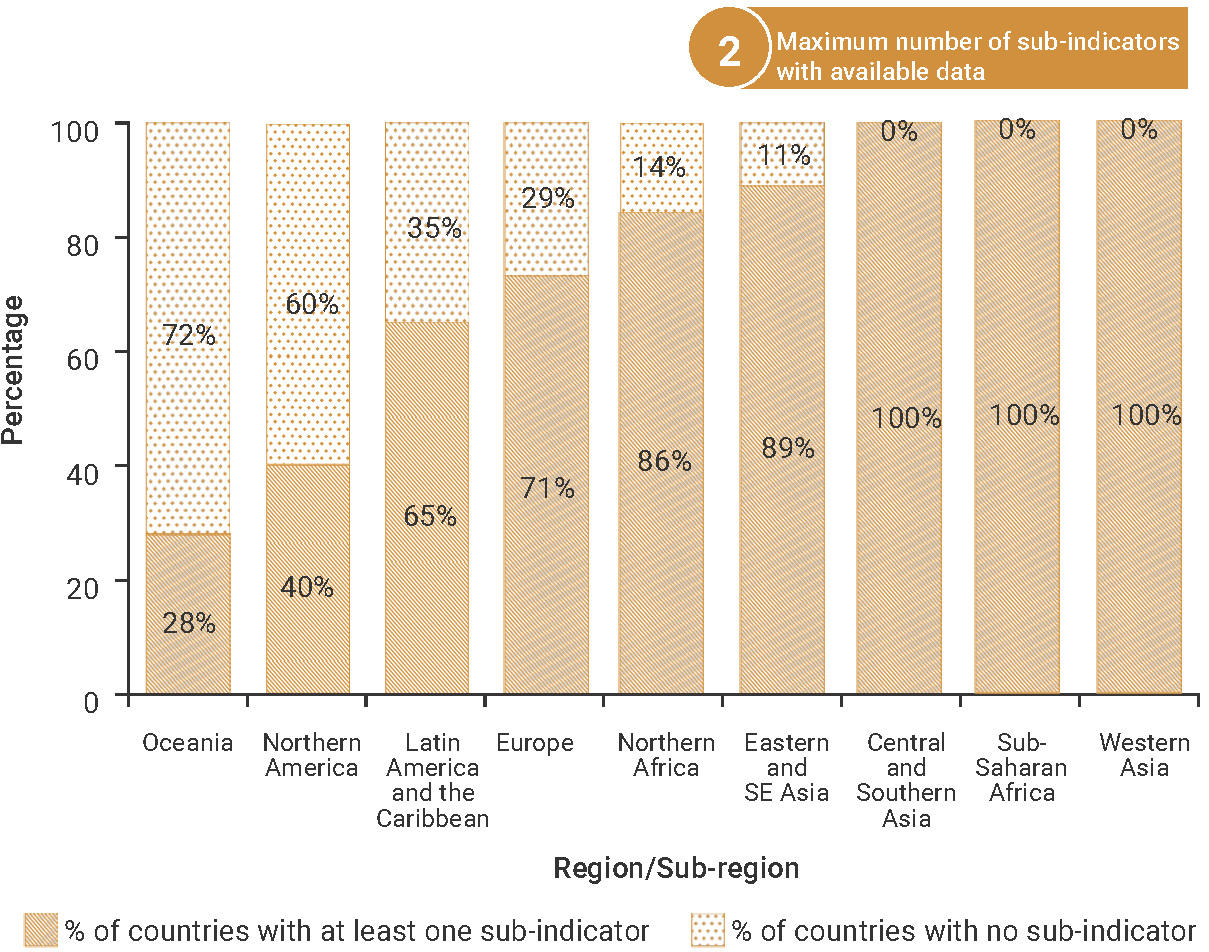SDG Indicator 11.6.2: Annual mean levels of fine particulate matter (e.g., PM2.5 and PM10) in cities (population weighted)
1. Key features and metadata
Definition: This indicator monitors the annual mean of the daily concentrations of fine suspended particles (equal to or less than 2.5 microns in diameter (PM2.5)) in urban areas, weighted by the corresponding population.
| Sub-indicator | Disaggregated by |
|---|---|
|
EN_ATM_PM25 Annual mean levels of fine particulate matter (population-weighted), by location (micrograms per cubic meter: µg/m3) |
Location (cities, rural areas, towns and semi-dense areas, or urban areas) |
Sources of information: Official reporting from countries (National Ministry of Health and/or Ministry of the Environment) to the World Health Organization (WHO). Sources of data include ground measurements from monitoring networks – collected for 6,000 cities and localities around the world – satellite remote sensing, population estimates, topography, information on local monitoring networks, and measures of specific contributors to air pollution.
Related SDG Indicator: 3.9.1 (Mortality rate attributed to household and ambient air pollution).
2. Data availability by region, SDG Global Database, as of 02 July 2025

3. Proposed disaggregation, links to policymaking and its impact
| Proposed disaggregation | Link to policymaking | Impact |
|---|---|---|
|
Annual mean levels of particulate matter (PM10 and PM2.5) (population-weighted), by location, by pollution source (micrograms per cubic meter: µg/m3) (WHO 2021b):
Applies to: EN_ATM_PM25 |
Air pollution by particulate matter is recognized as a major public health threat and is involved in the onset of many serious noncommunicable diseases. For example, stroke, heart disease, pulmonary and respiratory diseases, asthma, or lung cancer. It is estimated that exposure to air pollution is causing millions of deaths in addition to the loss of healthy years of life (UN 2018b). This disaggregation aims at monitoring the annual level of particulate matter by pollution source. Although this might be challenging, it will equip decision-makers with the information to identify opportunities to reduce ambient air quality. On this basis, it can be used todesign tailored policies and interventions to prevent and mitigate as much as possible high concentrations of particulate matter and costs by addressing the main sources of emissions. For example, traffic,industry, power generation, waste burning, andresidential fuel combustion. This disaggregation is in line with WHO Global air quality policy(WHO 2021b). |
Ambient air pollution is responsible for the death of 4.2 million people. Yet in a number of low- and middle-income countries, monitoring of air pollutants is still limited or non-existent (UN 2023e). Accordingly, those countries need to develop their monitoring systems to have a better understanding of the status of air quality and to enhance citizen awareness and early warning systems. (UN-Habitat 2022). In addition, governments are expected to also focus on smaller urban centres and rural areas that can have worse air quality and account for almost 50% of the global population. Governments should adopt more comprehensive and equitable approaches that do not leave behind less dense and rural areas and their dwellers who are often poorer and have less access to basic services (e.g. sanitation and prevention, heath care or clean energy). In addition to enhanced efforts on monitoring, data collection and reporting, governments need to align their legislative framework to WHO air quality guideline values to ensure better protection for their populations and the environment. Currently, only 51% of national air quality legislation has public health or both public and ecosystem protection as its main objective (UNEP 2021f). Examples of actions to beprioritized in developing countries to reduce air pollution include the promotion of clean energy (i.e. rural electrification, renewable energy or efficient cookstoves) and the development of urban planning and public transportation. This can generate beneficial impacts not only on the environment and human health but also in terms of social inclusion and general living conditions (e.g. safer public transportation). |

